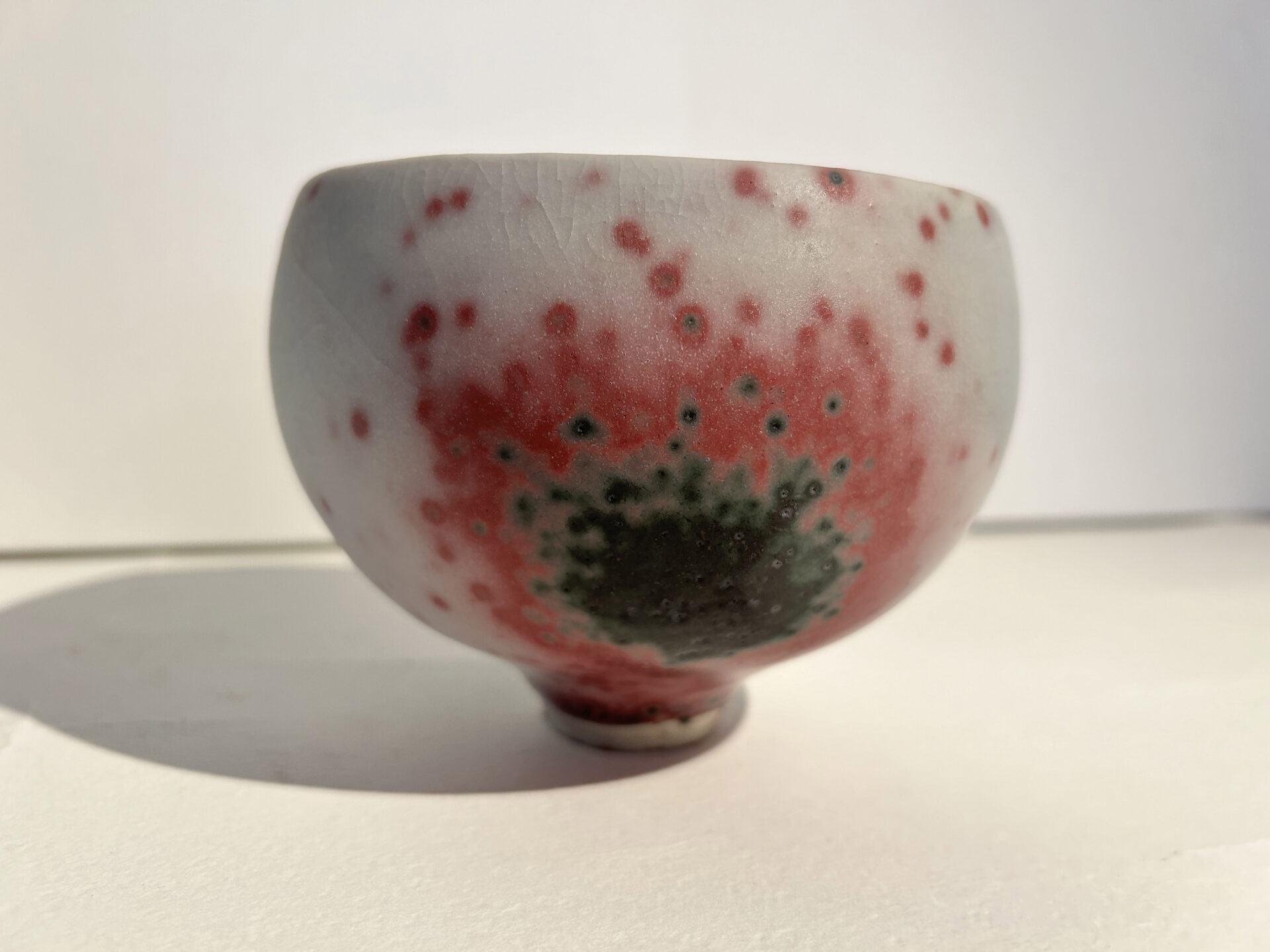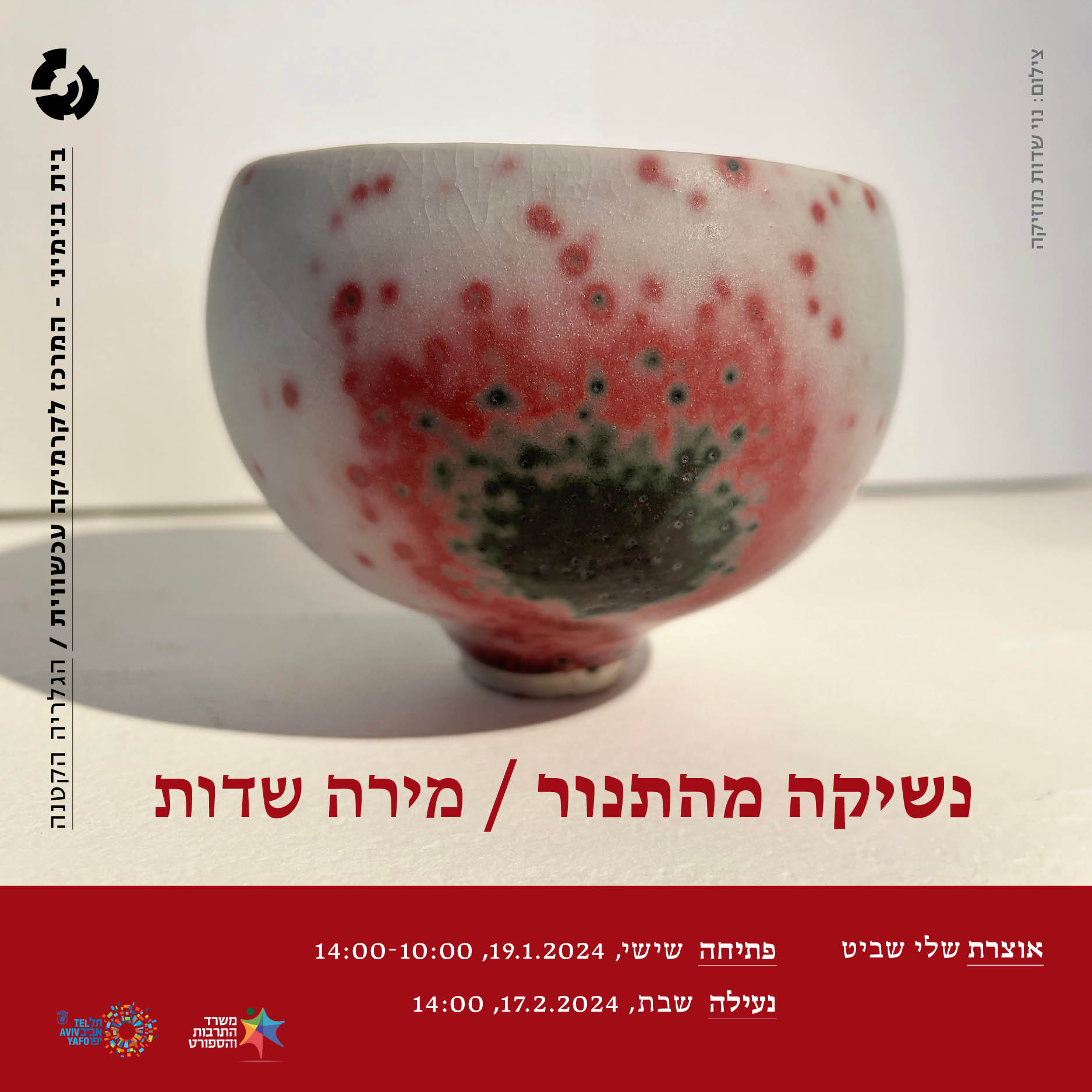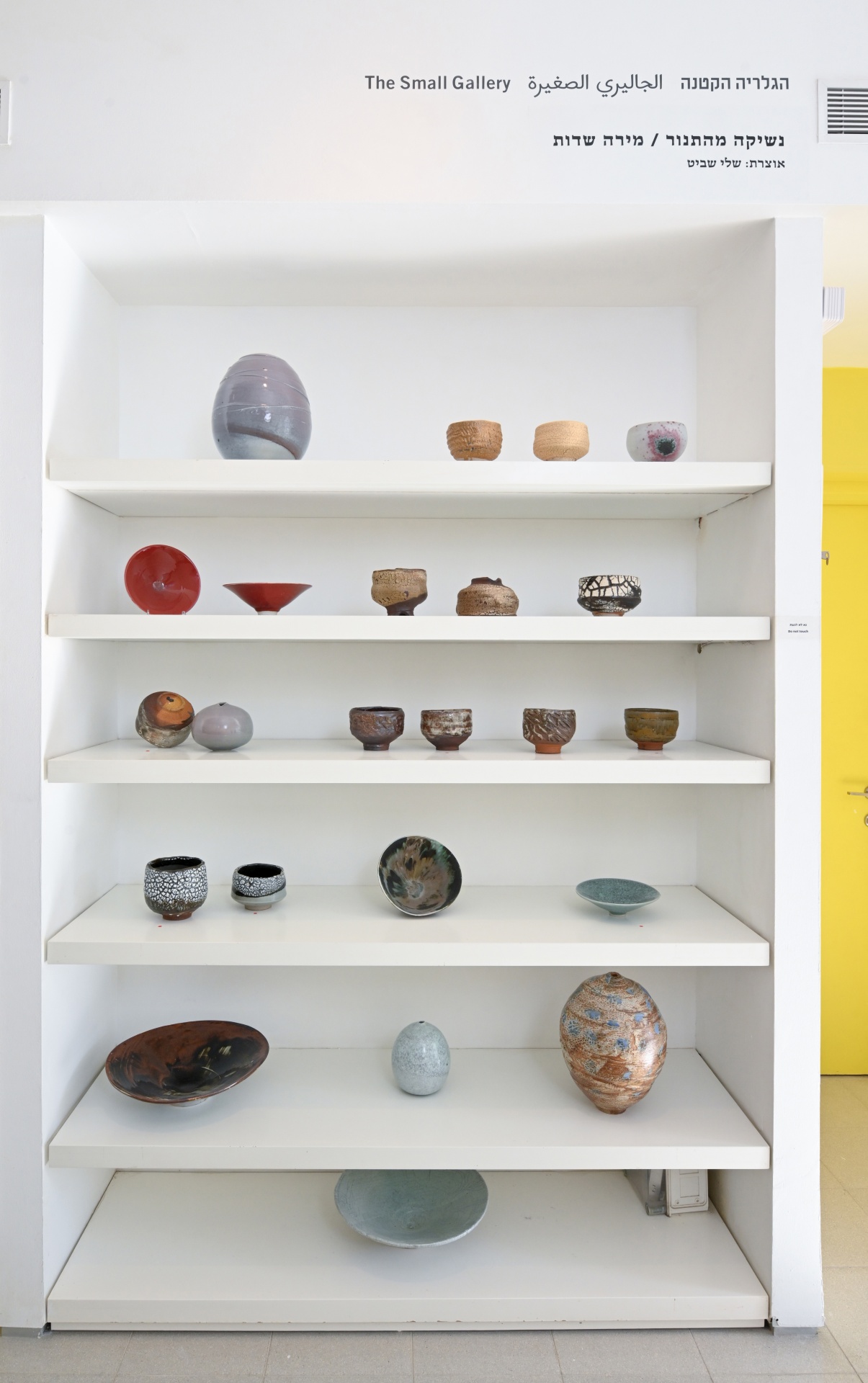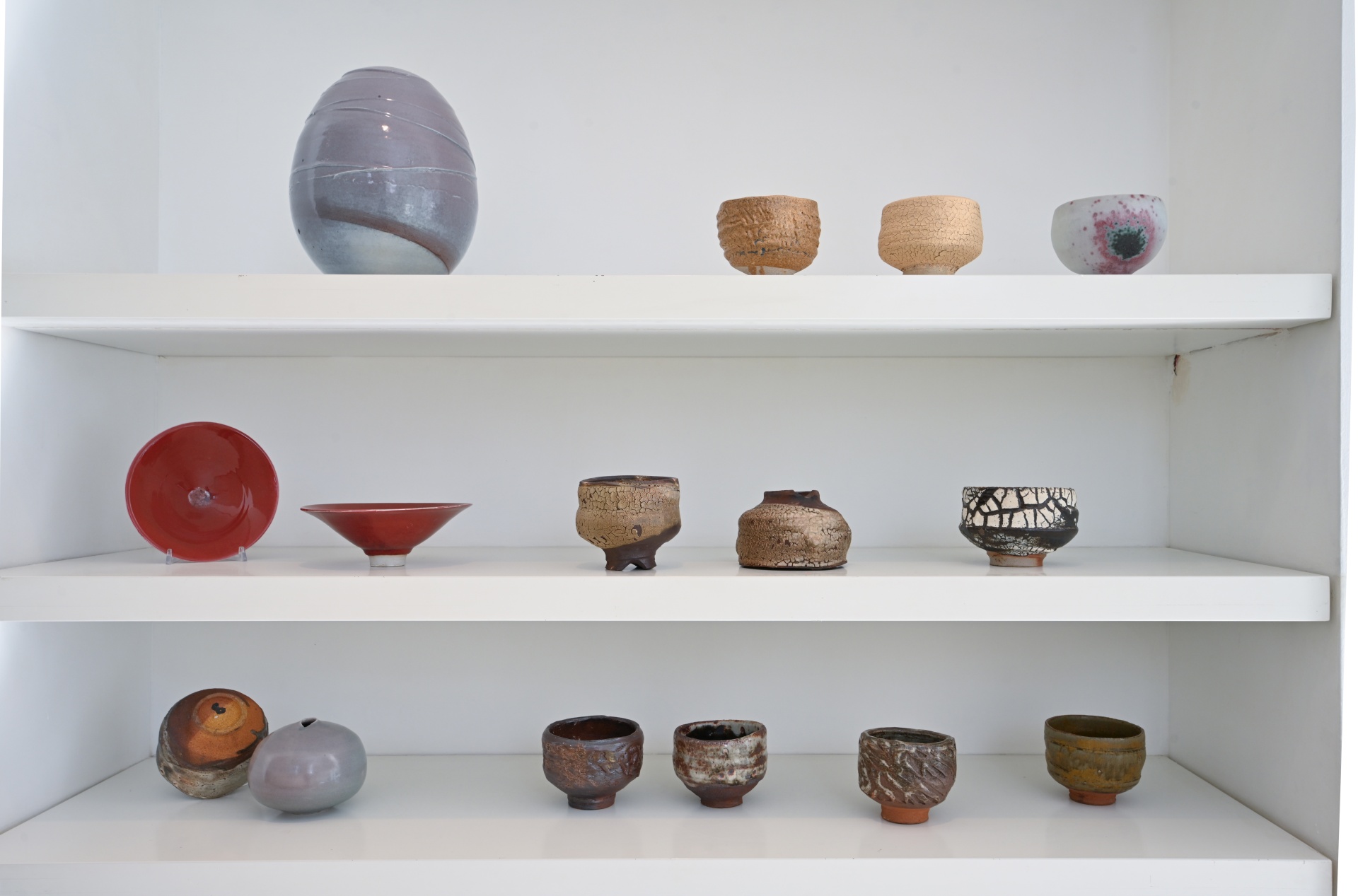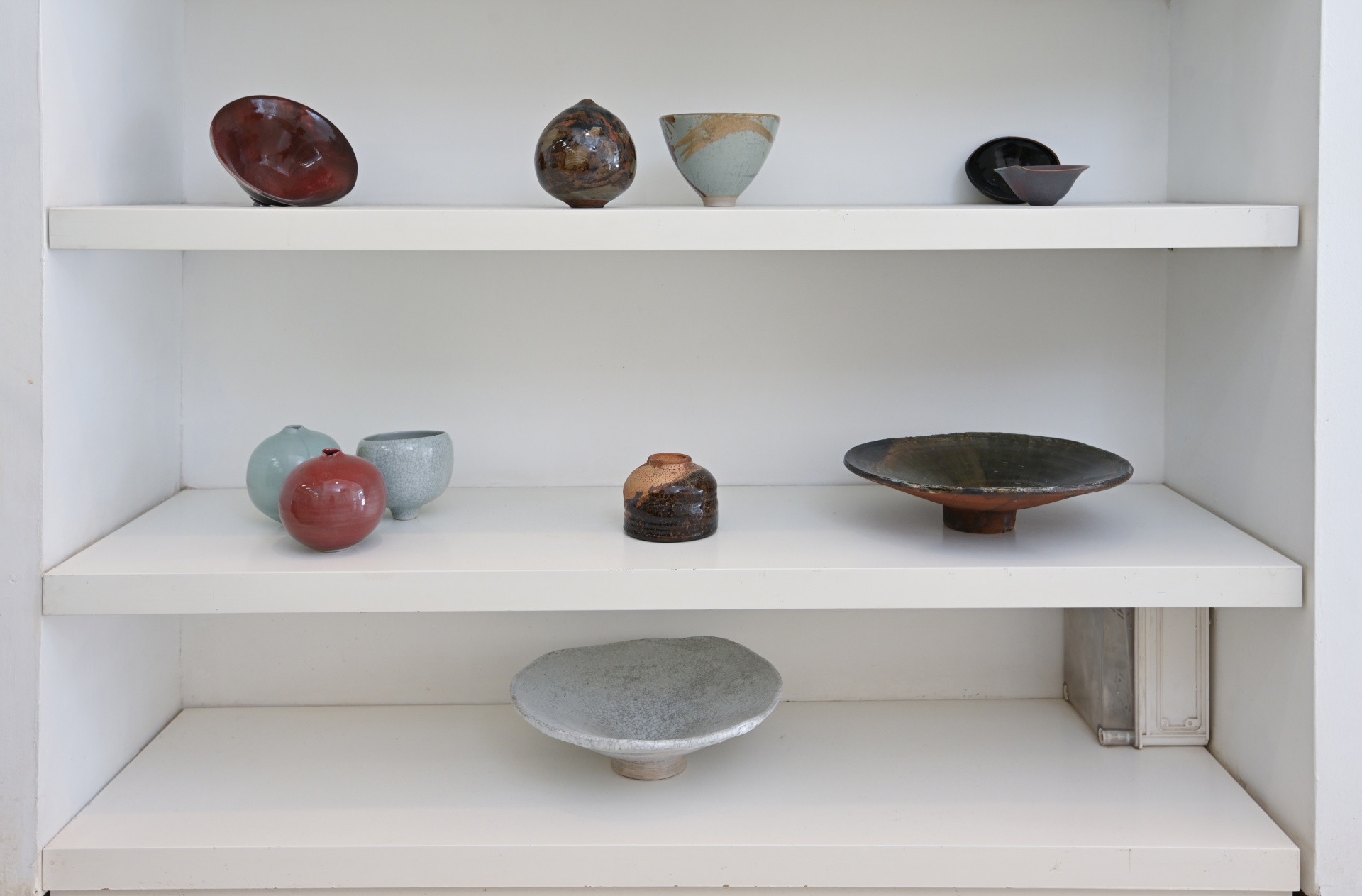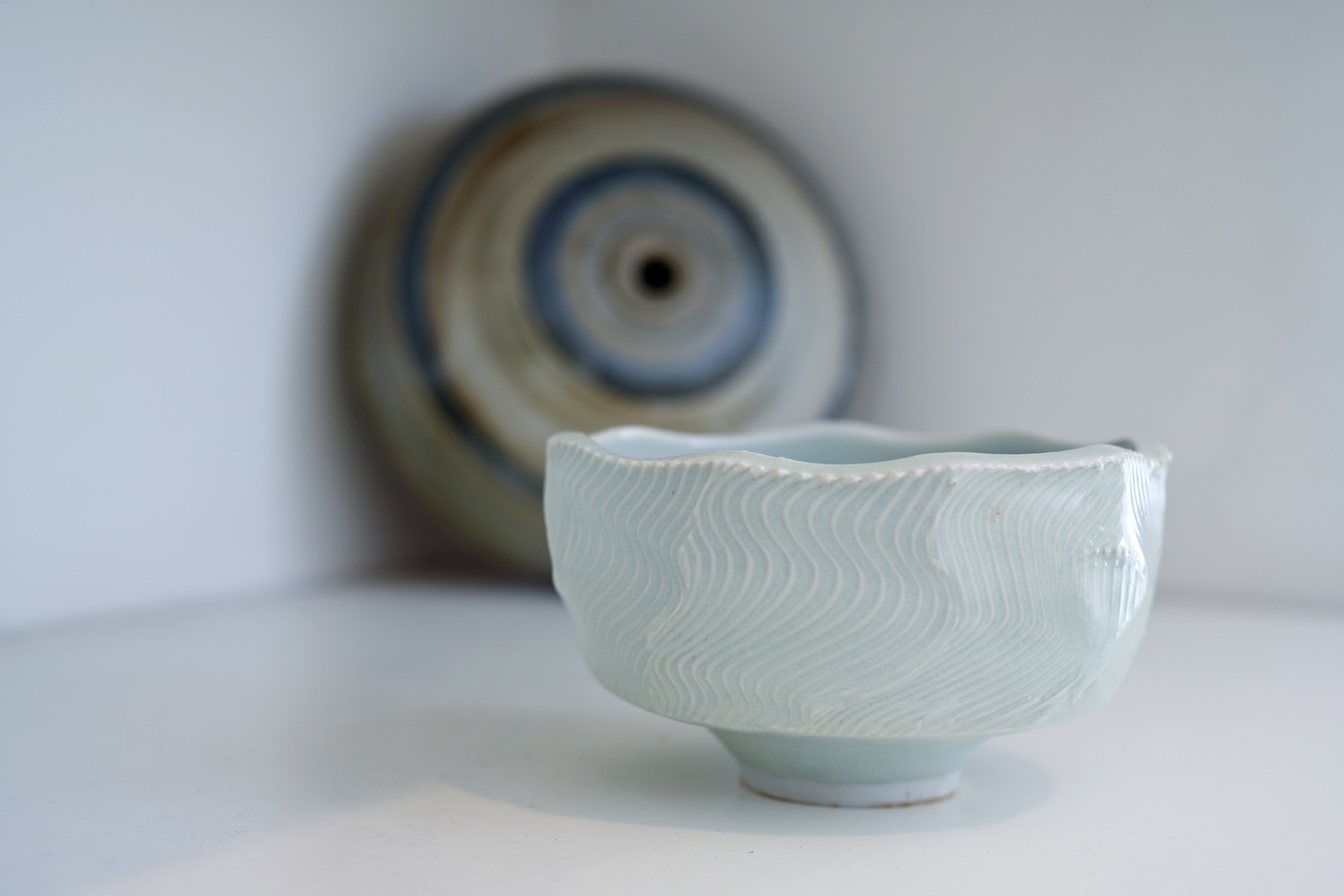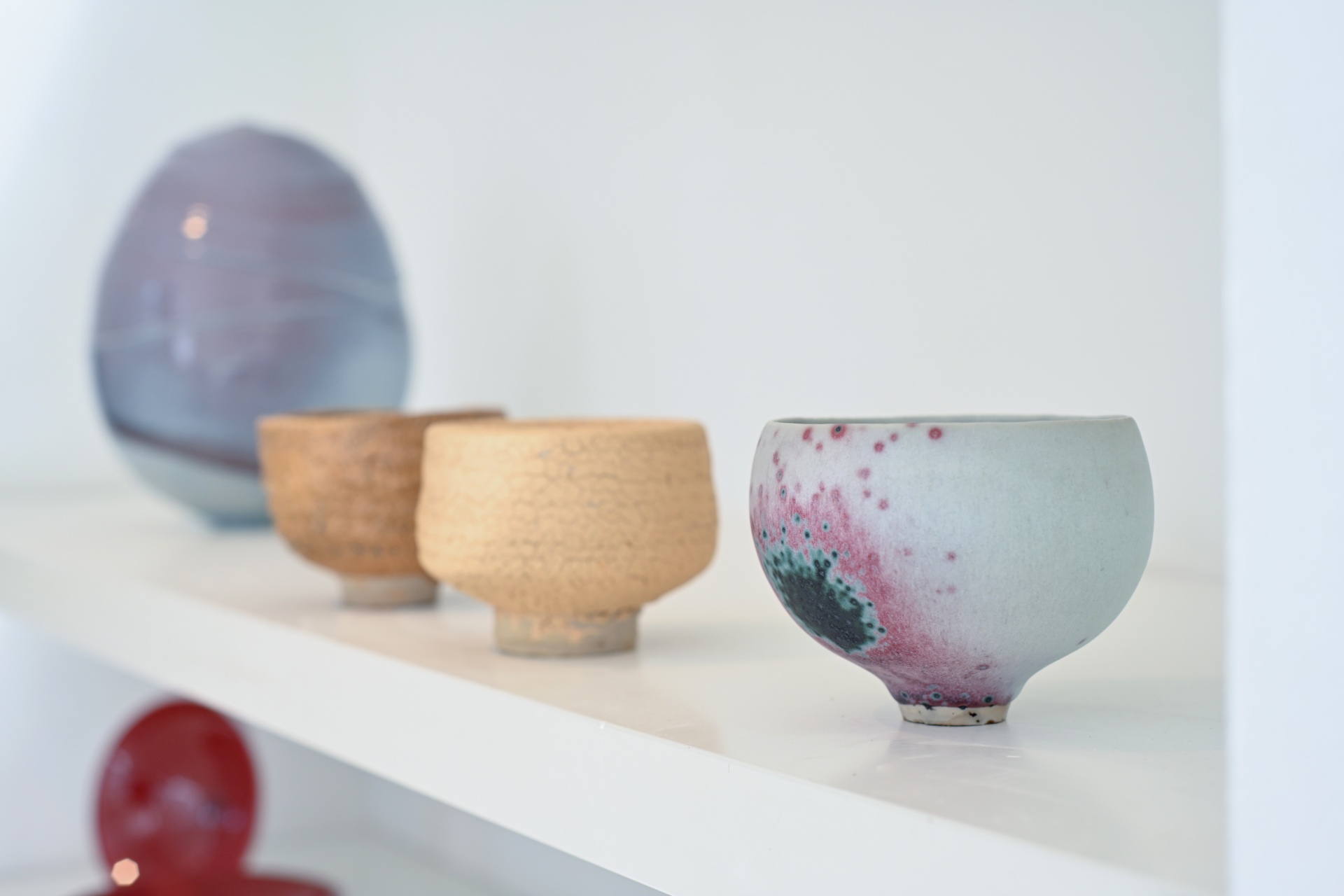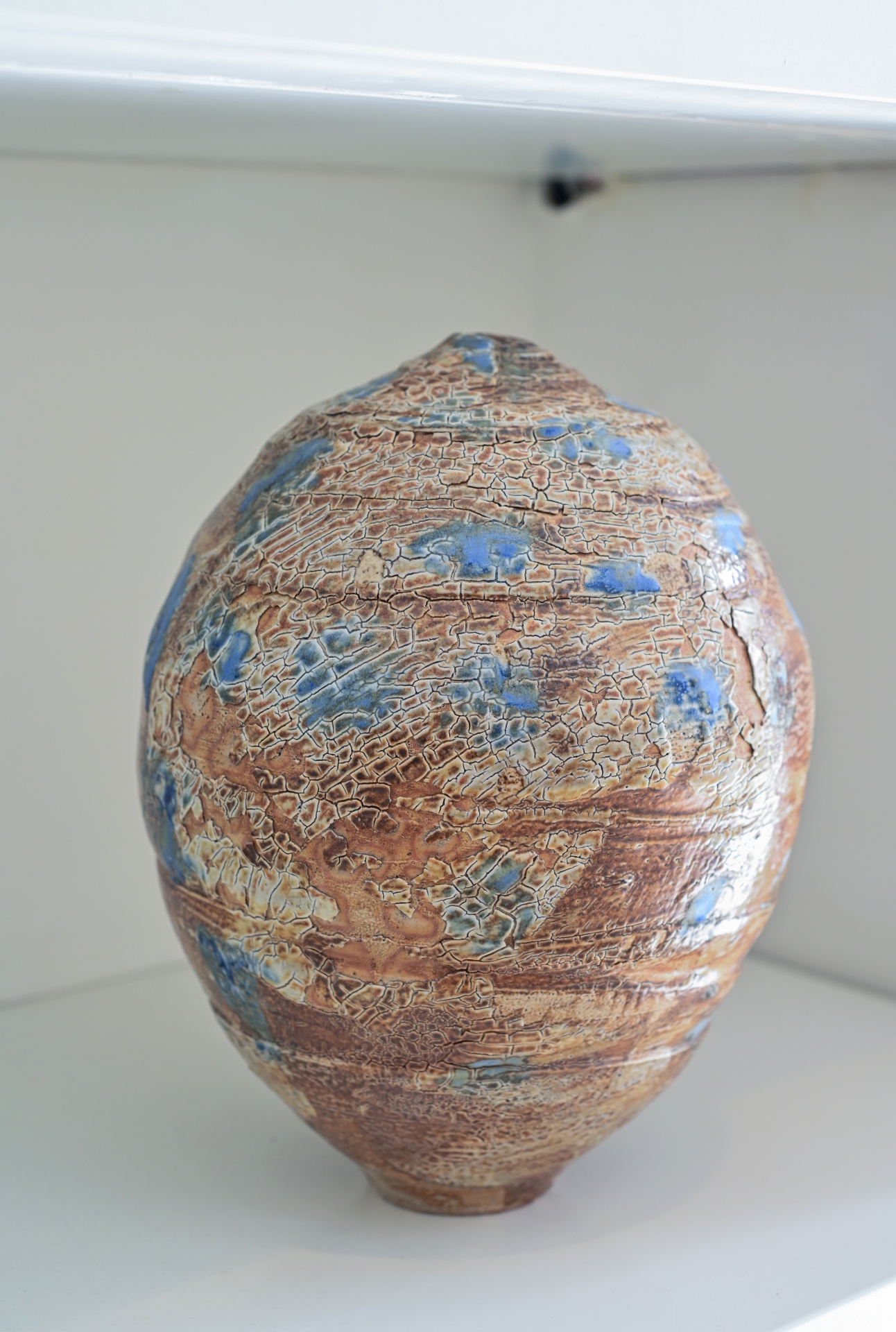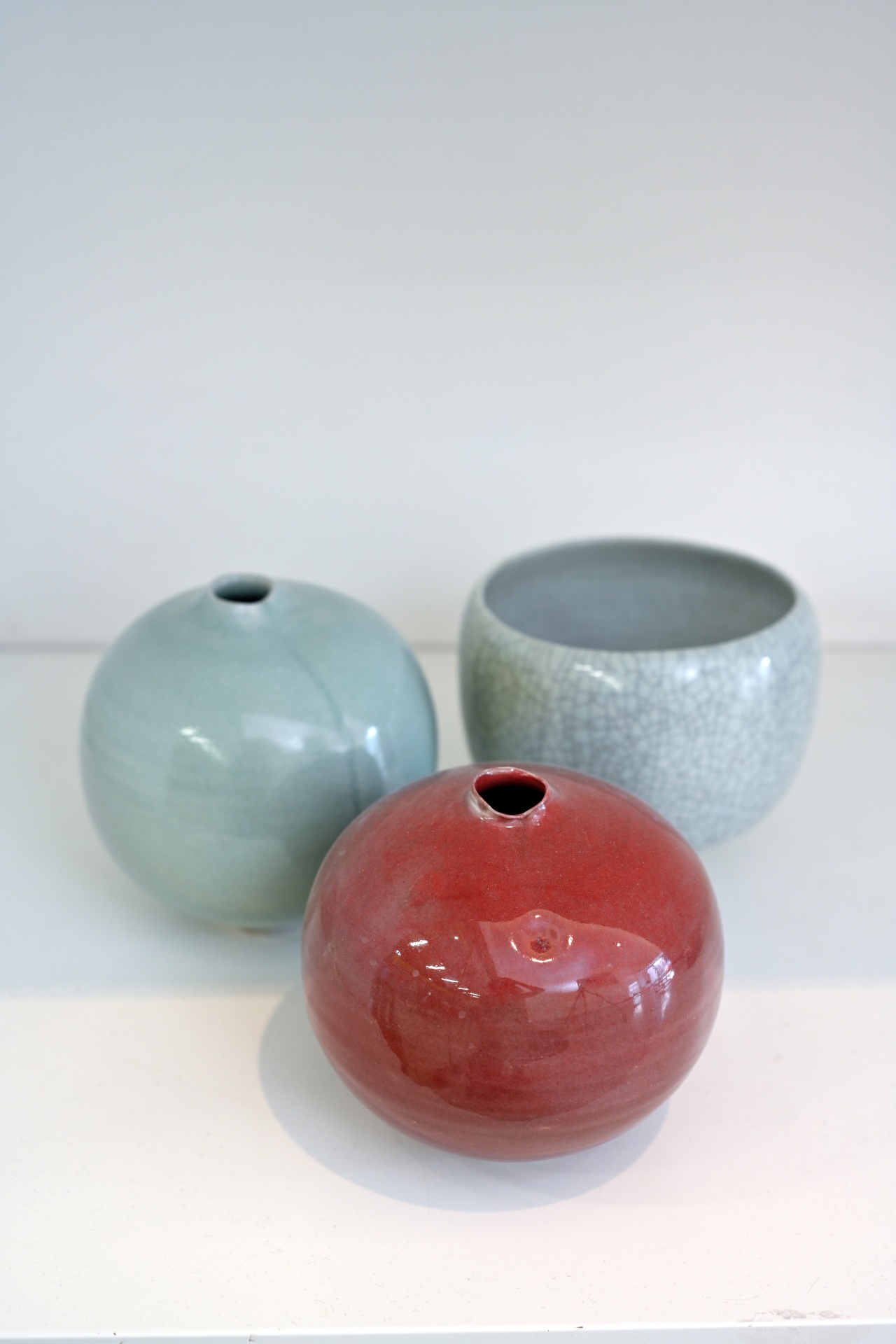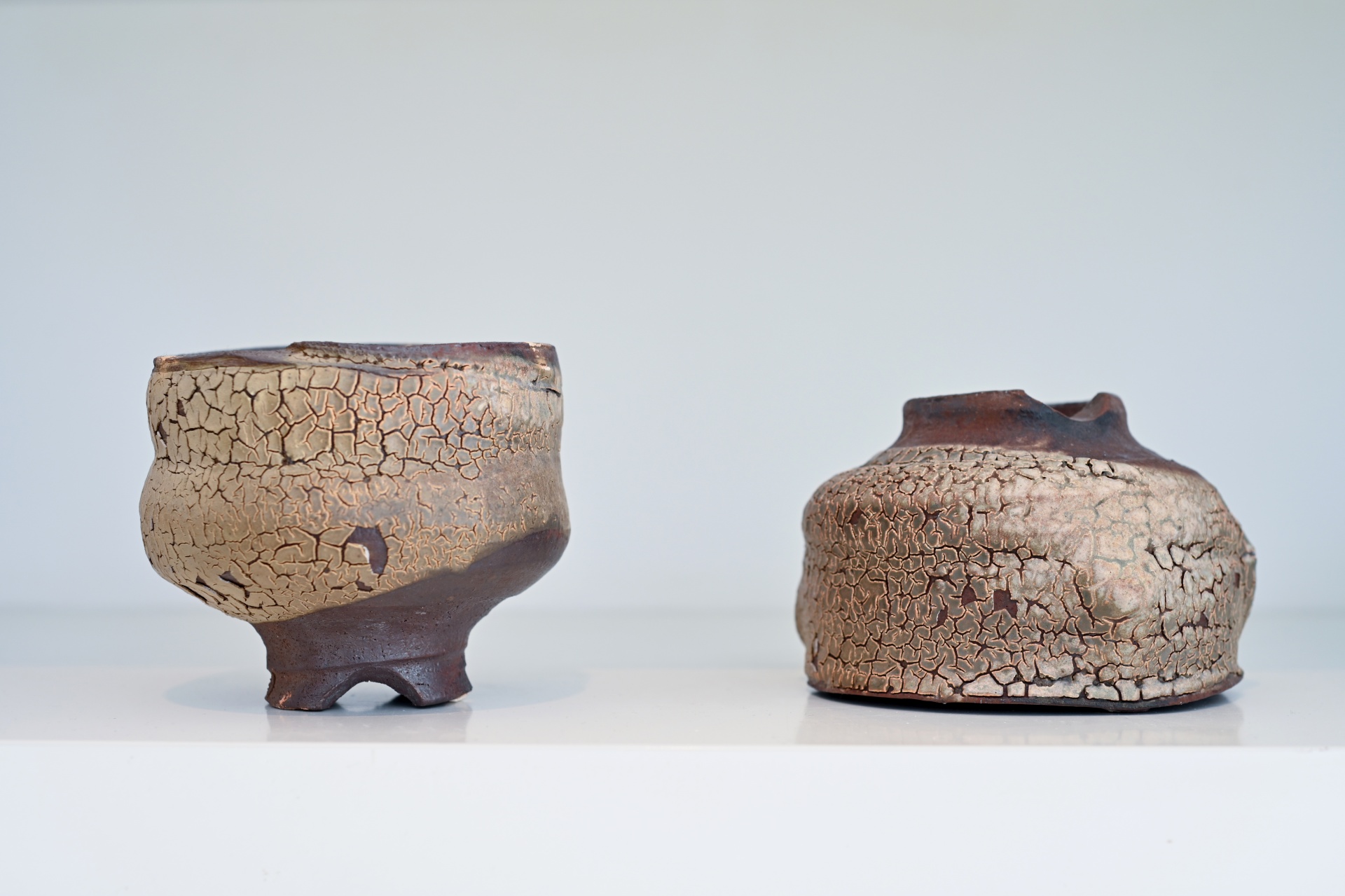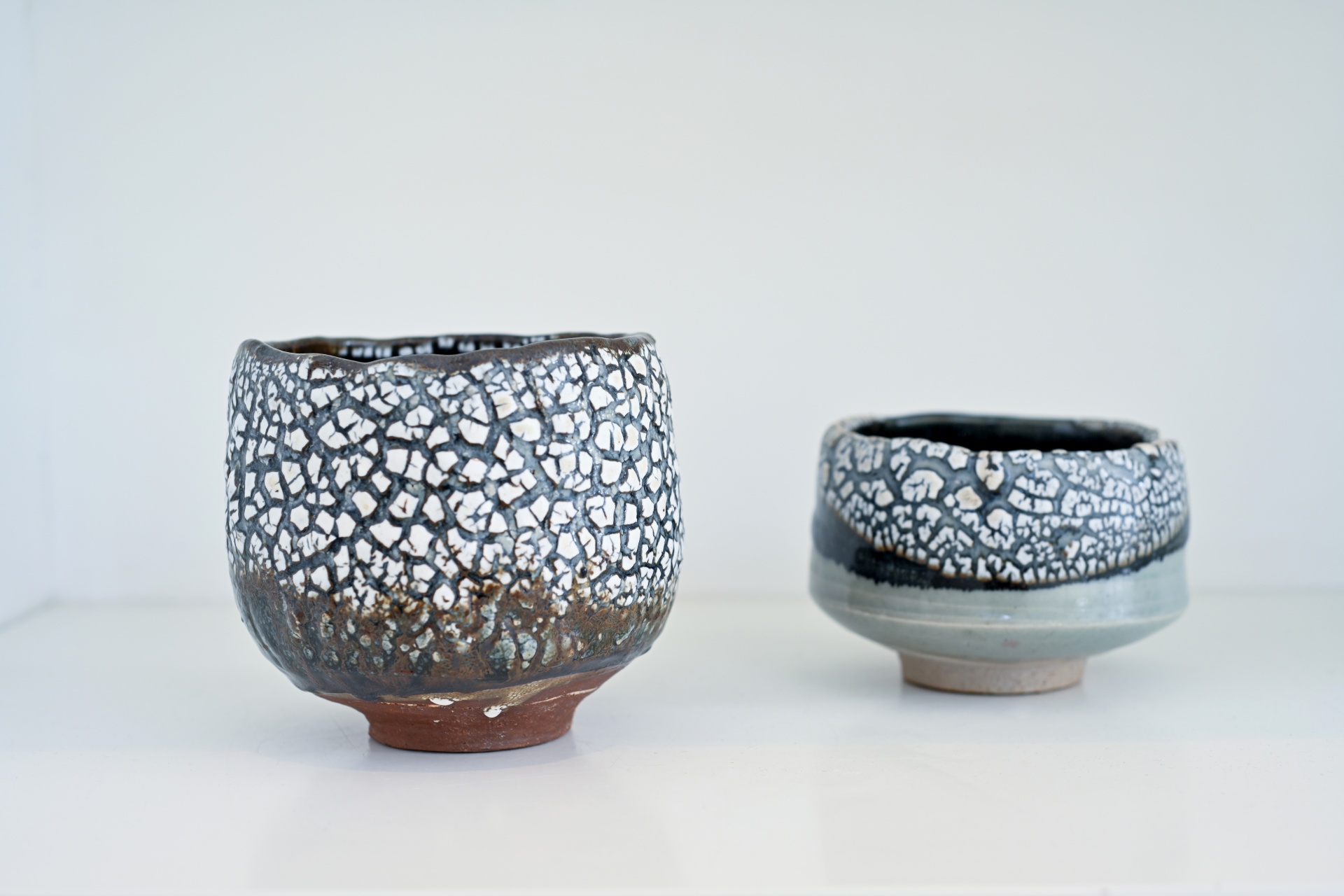Curator: Shelly Shavit
Opening: Friday, 19/1/24, 10:00
Closing: Saturday, 17/2/24, 14:00
Mira Sadot is a leading artist and ceramic maker in Israel. In the exhibition Kissed by the Kiln, one can see rare material qualities, from another time and place. Sadot made and fired pots with three-dimensional texture and naturally wild coloring. Vessels that embody different landscapes, that trap a moment of outburst. Some look snowy and wet while others look dry and cracked, some have been “kissed by the kiln” with red or carbon, bubbling volcanic glazes and more. Ceramic juggling. Sadot is a master from the old school that created fascinating and extreme surfaces with special firings. Her impressive works are a result of in-depth research and years of experience together with material skill and a spiritual approach to aesthetics. Each pot is unique, the
result of the meeting between chance and planned.
Sadot was born in Chernovitz in 1939 and emigrated to Israel in 1946. Her first meeting with clay was at the Oranim Seminar in 1962 in the class of the ceramic artist Hana Harag Zuntz, one of the “mothers” of Israeli studio pottery, where the base of creativity was opened before her. From this point she continued her in-depth research and broad dialogue with ceramics. During this period, she broadened her knowledge with leading artists such as: Michael Gross – sculpture, Marcel Janko and Yosef Hirsh – drawing. Between 1971 – 75 she studied in the ceramics department of Bezalel in Jerusalem. Amongst her teachers were the head of the department at the time, the ceramic artist Gedula Ogen, and the ceramic artist Lidia Zavatzky. Her colleague, Sara Hakkert wrote in an article about Mira Sadot that at Bezalel she learnt a sensitivity to the vessel and a love for clay and fire that continued with her all her life. When she completed her studies, she continued with her passion to develop, experimenting with materials while at the same time expanded her theoretical knowledge of art and culture learning to paint with the artist George Yunis, studying Zen Buddhism and Japanese Aesthetics at the Tel Aviv University with Prof. Yakov Raz as well as her bachelor’s and master’s degree inthe History of Art at the Hebrew University, Jerusalem. In 1980, Sadot did a workshop on the history of ceramics at the Victoria and Albert Museum in London.
In 1984 Sadot returned to the Ceramic Department at Bezalel as a lecturer and quickly became a key figure in the department until she retired in 2000. As in her personal development Sadot taught theory alongside practical aspects and over the years she taught art history focusing on origin and traditions from the Far East, the Mediterranean and Latin America as well as courses in modern ceramics and the relationship to plastic arts. She also taught practical classes such as wheel-throwing, technology, special firings (wood, salt, gas, raku and more). Gedula Ogen wrote about those days: “At the end, the quality of the work is determined by the dialogue with the flames of the kiln as the firing progresses.
Mira knows how to draw the tongue of the flame through the peephole of the kiln and determine the thickness and hunger for oxygen. The long-term relationship between the material and the fire throughout the making process produces works that have a natural harmony and vitality that are a contribution to culture.”
Mira Sadot over the years as an artist and lecturer did not stop studying and doing practical firing workshops in Israel and abroad. One of the most meaningful interactions with Japanese culture she experienced in the summer of 1995 when she did a residency at Tokoname in Japan – an ancient ceramic center that is still active today.
The ceramic artist Amnon Amos, who began his professional career as a student of Sadot in the Ceramic Department of Bezalel tells of the special relationship he had with her and she eventually asked him to replace her as a lecturer when she left the department. Amos describes her as a totally committed artist and teacher who considered teaching clay as a meaningful mission in her life. “On one hand she was temperamental and restless, hyperactive, doing lots of things at the same time, and yet she was spiritual, a master of yoga and meditation”. During the wheel throwing classes she corrected posture and enriched the department with yoga classes.
Amos continues to describe her as an active partner in all the student exercises. “During the wood firings she would come and be with us to check that all is going well, the slip was the right thickness and excited about the firing as if it was her first time. She had an internal fire that created a personal connection with her. In her lessons she instilled in her students the love for the
far eastern approach to materiality: Japan and China and Wabi Sabi aesthetics. Her honest excitement was contagious and impassioned the students: “We would open the reduction kiln with superlatives, a typical remark from Mira was: Your pot has a kiss from the kiln referring to the one-off nature and the mark left by the chance meeting between the flame and the work “ The unique
coincidence which is central to eastern tradition and the heart of Sadot’s making.

